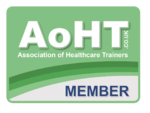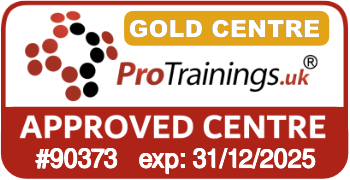
HSE Regulations
The Health and Safety (First Aid) Regulations 1981 require employers to provide adequate and appropriate equipment, facilities and personnel to ensure their employees receive immediate attention if they are injured or taken ill at work. These Regulations apply to all workplaces including those with less than five employees and to the self-employed.
HSE will prosecute in cases where there is a significant risk, a disregard for established standards or persistent poor compliance with the law.
In all business sectors (construction, manufacturing, warehousing, sports centres, offices, shops etc) employers need to appoint sufficient staff to act as "First Aiders" and ensure that they are properly trained to handle any accidents and injuries that could happen in the workplace.
Employer's Legal Duties
What is ‘adequate and appropriate’ will depend on the circumstances in the workplace. This includes whether trained First Aiders are needed, what should be included in a First Aid box and if a First Aid room is required. Employers should carry out an assessment of First Aid needs to determine what to provide.
The Regulations do not place a legal duty on employers to make First Aid provision for non-employees such as the public or children in schools. However, HSE strongly recommends that non-employees are included in an assessment of First Aid needs and that provision is made for them.
Assessment of First Aid Needs
Employers are required to carry out an assessment of First Aid needs. Some examples of things to consider when completing your assessment of First Aid needs can be found below, but it is important to remember that you know the specifics of your business and industry which is why the HSE can not state the number of First Aiders you may require. In the event of being unsure, we always recomend businesses liaise with their insurance companies with what they would want in place.
- Nature of the work being carried out
- Size of the organisation
- Number of people
- Distribution of the work force (i.e. several floors, buildings etc)
- People working alone
- History of accidents
- Type of work being carried out
- Remoteness of site from the Emergency Services
- Sickness or other absences
- Shift patterns
It may be the case that your business has differing needs across the premises i.e. offices and warehouses operating machinery meaning that the level of trained personell may differ from department to department.
Application of the Health and Safety (First Aid) Regulations 1981 to Self-employed Workers
If you are self employed you are required to ensure you have such equipment, as may be adequate and appropriate in the circumstances, to provide First Aid to yourself while at work.
You should make an assessment of the hazards and risks in your workplace and establish an appropriate level of First Aid provision. If you carry out activities involving low hazards (eg clerical work) in your own home, you would not be expected to provide First Aid equipment beyond your normal domestic needs.
If your work involves driving long distances or you are continuously on the road, the assessment may identify the need to keep a personal First Aid kit in your vehicle.
Many self-employed people work on mixed premises with other self-employed or employed workers. Although you are legally responsible for your own First Aid provision, it is sensible to make joint arrangements with the other occupiers and self-employed workers on the premises. This would generally mean that one employer would take responsibility for First Aid for all workers on the premises. HSE strongly recommends there is a written agreement for any such arrangement.
Regulations on Manual Handling
Employers have a legal obligation under the Manual Handling Operations Regulations 1992[4] to make a sufficient and suitable assessment of the risk to employees from the manual handling of loads. This is a legal requirement and the Regulations must be complied with.
The Regulations set out measures that should be followed to reduce the risks from manual handling. These are as follows:-
- Avoid manual handling operations so far as is reasonably practicable
- Assess the risk in any manual handling operations that cannot be avoided
- Reduce the risk of injury so far as reasonably practicable








